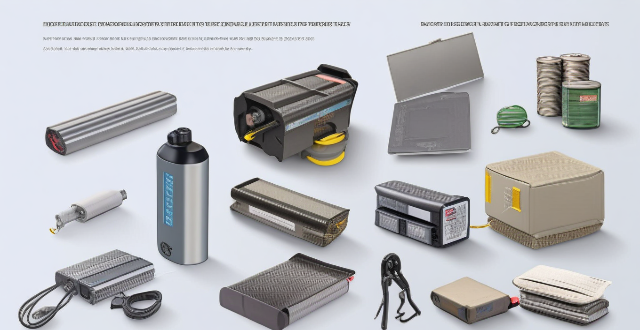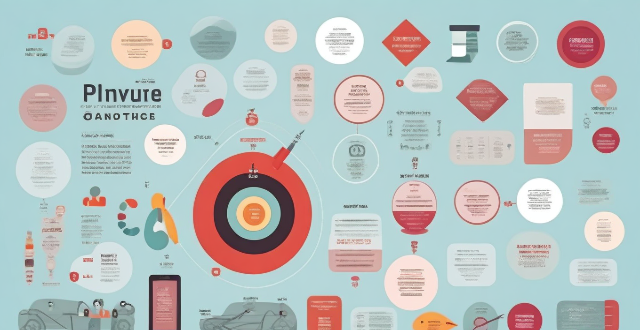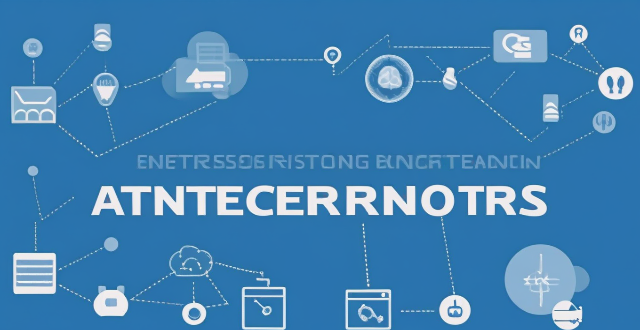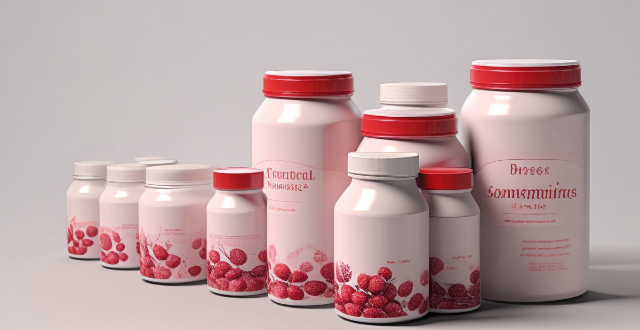Reduce Lifespan

What is the lifespan of a lithium battery ?
The lifespan of a lithium battery is affected by various factors such as the type of battery, usage patterns, and environmental conditions. In general, most lithium batteries have a lifespan of 2-3 years or 300-500 charge cycles, whichever comes first. However, this can vary significantly based on the specific application and usage patterns. Different types of lithium batteries have different lifespans. For example, Lithium-ion batteries typically have a longer lifespan than Lithium-polymer batteries. Additionally, some newer types of lithium batteries, such as solid-state batteries, may have even longer lifespans than traditional lithium-ion batteries. How you use your lithium battery can also affect its lifespan. For example, if you frequently charge your battery to 100% and then discharge it completely, this can shorten its lifespan compared to if you only charged it to 80% and discharged it to 20%. Similarly, if you frequently expose your battery to high temperatures or cold temperatures, this can also shorten its lifespan. Finally, the environmental conditions in which your lithium battery is stored and used can also affect its lifespan. For example, if you store your battery in a hot or humid environment, this can shorten its lifespan compared to if you store it in a cool, dry environment. Similarly, if you frequently expose your battery to extreme temperatures or humidity levels while using it, this can also shorten its lifespan. To maximize the lifespan of your lithium battery, there are several things you can do: * Avoid exposing your battery to extreme temperatures or humidity levels. * Try to keep your battery's charge level between 20% and 80% as much as possible. * Use a high-quality charger that is designed specifically for your type of lithium battery. * If possible, try to use your device's built-in power management features to help regulate charging and discharging patterns.

How does the research on graphene affect battery performance and lifespan ?
Graphene research has a significant impact on battery performance and lifespan by improving electrical conductivity, mechanical strength, and thermal conductivity. Increased charge carrier mobility and enhanced electrode performance lead to better power output and faster charging times. Improved cyclability and reduced shrinkage/expansion contribute to longer battery lifespan. Effective heat dissipation and enhanced safety are also benefits of graphene's high thermal conductivity. Overall, graphene is a promising material for advancing battery technology.

What factors affect the performance and lifespan of a power battery ?
The performance and lifespan of a power battery are influenced by various factors, including charging habits, discharge rates, temperature conditions, mechanical stress, age, quality of the Battery Management System (BMS), and chemical composition. Overcharging or undercharging can lead to reduced lifespan due to heat buildup or memory effect, respectively. High discharge rates and deep depths of discharge can stress the battery and shorten its longevity. Temperature extremes and fluctuations affect efficiency and stability, while mechanical impacts and vibrations can cause physical damage. Aging is an inevitable factor, but a well-designed BMS can mitigate many issues related to charge and temperature control. Different chemical compositions also play a role in stability and lifespan characteristics. Proper care and management are essential for optimizing battery performance and extending its lifespan.

How can I maximize the lifespan of my electric vehicle's power battery ?
Maximizing the Lifespan of Your Electric Vehicle's Power Battery: Electric vehicles (EVs) are becoming increasingly popular due to their eco-friendliness and cost-effectiveness in the long run. However, one of the most crucial components of an EV is its power battery, which requires proper maintenance to ensure a longer lifespan. Here are some tips on how you can maximize the lifespan of your electric vehicle's power battery: 1. Avoid extreme temperatures: The performance and lifespan of your EV's power battery can be significantly affected by extreme temperatures. Both high and low temperatures can cause damage to the battery cells, leading to reduced capacity and shorter lifespan. Therefore, it is essential to store and operate your EV within moderate temperature ranges whenever possible. 2. Maintain proper charging habits: Proper charging habits play a crucial role in maximizing the lifespan of your EV's power battery. It is recommended to maintain a moderate state of charge (SOC) and avoid frequent deep discharges and full charges. 3. Regular maintenance: Regular maintenance is essential for ensuring the longevity of your EV's power battery. This includes monitoring the battery's health, checking for any signs of damage or leakage, and addressing issues promptly. 4. Drive efficiently: Driving efficiently can also help maximize the lifespan of your EV's power battery by reducing strain on the battery and improving overall energy efficiency.

How can you maintain a lead-acid battery to extend its lifespan ?
Lead-acid batteries are commonly used in vehicles, UPS, and solar storage systems. To ensure their longevity, it's essential to maintain them properly. Here's how you can extend the lifespan of your lead-acid battery: prevent overcharging, avoid deep discharges, maintain proper fluid levels, keep the battery clean, and store properly when not in use. By following these maintenance tips, you can significantly extend the lifespan of your lead-acid battery and ensure reliable performance for years to come.

What are the most popular climate-friendly products in the market today ?
The article discusses popular climate-friendly products available in the market today. These include solar panels, electric cars, smart thermostats, and LED light bulbs. Solar panels are a renewable energy source with low maintenance costs and a long lifespan. They reduce reliance on fossil fuels and have government incentives for installation. The benefits of using solar panels include decreased carbon footprint, lower electricity bills, energy independence, and a cleaner environment. Electric cars have lower greenhouse gas emissions, high efficiency, low operational costs, advanced technology features, and a wide range of models available. They reduce air pollution, offer a quieter driving experience, provide potential tax credits and rebates, and support the transition to renewable energy sources. Smart thermostats optimize energy efficiency, have remote control capabilities, learning algorithms to adapt to user preferences, compatibility with various HVAC systems, and easy installation process. They significantly reduce heating and cooling costs, improve indoor comfort levels, minimize wasted energy usage when not at home or sleeping, and contribute to a smaller carbon footprint through energy conservation. LED light bulbs have a long lifespan compared to traditional bulbs, low energy consumption, bright natural light quality, variety of styles and colors available, and compatibility with smart home systems for automated lighting control. They drastically reduce electricity usage for lighting needs, lessen the need for frequent replacements due to longer lifespan, offer customizable lighting options for different moods and tasks, and support environmental conservation efforts by using less energy overall.

How long do diesel hybrid engines last ?
This article discusses the factors that affect the lifespan of diesel hybrid engines and provides an estimate of their expected lifespan. It also offers tips for maximizing the lifespan of these engines through proper maintenance, responsible driving habits, high-quality fuel, and protection against extreme temperatures.

How long do hybrid cars typically last ?
Hybrid cars, which combine a conventional internal combustion engine with an electric motor, are known for their fuel efficiency and environmental benefits. The text discusses the lifespan of hybrid cars, battery life, maintenance, driving habits, usage, factors affecting hybrid car lifespan, tips for maximizing your hybrid car's lifespan, and concludes that many hybrid vehicles can last between 100,000 to 200,000 miles or more when properly maintained.

How long does a lead-acid battery last ?
Lead-acid batteries are commonly used in various applications, including vehicles, uninterruptible power supplies (UPS), and renewable energy storage systems. The lifespan of a lead-acid battery depends on several factors, such as its type, usage, and maintenance. In this article, we will discuss the typical lifespan of lead-acid batteries and provide tips for extending their service life.

How can I maximize the lifespan of my lithium battery ?
Lithium batteries are widely used in various devices, from smartphones and laptops to electric vehicles. To ensure that your lithium battery lasts as long as possible, it's essential to follow some best practices for charging, storing, and using the battery. Here are some tips to help you maximize the lifespan of your lithium battery: 1. Avoid Overcharging 2. Maintain Proper Charging Levels 3. Store at Optimal Temperatures 4. Manage Battery Use 5. Software Updates 6. Physical Care

What factors affect the performance of a lithium battery ?
The performance of a lithium battery can be affected by temperature, charging rate, discharging rate, depth of discharge, age, and manufacturing quality. High temperatures and fast charging can damage the battery and reduce its lifespan, while low temperatures and slow charging can prolong the battery's lifespan but may not provide enough power for high-demand devices. High discharging rates can cause the battery to heat up and decrease in performance, while low discharging rates can prolong the battery's lifespan but may not provide enough power for high-demand devices. High DoD can lead to increased stress on the battery and a shorter lifespan, while low DoD can help prolong the battery's lifespan but may not be practical for devices that require a lot of power. Older batteries will have decreased capacity and performance, while newer batteries will have better performance and capacity. High-quality manufacturing processes can result in better performing batteries with longer lifespans, while low-quality manufacturing processes can result in poor performing batteries with shorter lifespans.

What is the future potential of compressed air energy storage (CAES) ?
Compressed air energy storage (CAES) is a promising technology that has the potential to revolutionize the way we store and use energy. Key points about its future potential include increased efficiency and scalability, low cost and long lifespan, environmental benefits, and integration with other technologies. CAES systems can be scaled up or down depending on the amount of energy storage required and offer good value for money over their lifetime. They also have a long lifespan, typically lasting 20 years or more with proper maintenance. Additionally, CAES systems can help reduce carbon emissions by using renewable energy sources such as wind and solar. Finally, they can stabilize the grid during peak demand periods and be combined with other forms of energy storage to create hybrid systems that offer even greater flexibility and efficiency.

What factors affect the lifespan of a DC brushed motor, and how can they be mitigated ?
The lifespan of a DC brushed motor is influenced by mechanical wear, electrical stress, thermal effects, and environmental factors. To extend its operational life, strategies like regular maintenance, proper sizing, protection circuitry, adequate cooling, and maintaining cleanliness are recommended.

How long does a typical power battery last in an electric vehicle ?
Electric vehicles (EVs) have become increasingly popular due to their environmental benefits and lower operating costs. One of the most common concerns for potential EV owners is the lifespan of the vehicle's power battery. In this article, we will explore the typical lifespan of a power battery in an electric vehicle and factors that can affect it. The lifespan of a power battery in an electric vehicle depends on several factors, including the type of battery, driving habits, and maintenance practices. However, a general rule of thumb is that a typical power battery lasts between 8-15 years or 100,000-200,000 miles. Several factors can impact the lifespan of a power battery in an electric vehicle. These include: - Type of Battery: The two most common types of batteries used in EVs are lithium-ion and nickel-metal hydride. Lithium-ion batteries generally have a longer lifespan than nickel-metal hydride batteries. - Driving Habits: Frequent rapid acceleration and braking can shorten the lifespan of a power battery. Additionally, driving at high speeds and in hot temperatures can also negatively impact battery life. - Maintenance Practices: Proper maintenance practices, such as regularly checking and maintaining the cooling system, can help extend the lifespan of a power battery. Neglecting maintenance can lead to premature battery failure. - Charging Habits: Charging the battery to 100% every time can shorten its lifespan. It is recommended to charge the battery to around 80% to prolong its lifespan. As a power battery ages, it may start showing signs of failure. Some common signs include: - Reduced Range: If you notice a significant decrease in the distance your EV can travel on a single charge, it could be a sign that your power battery is failing. - Slow Charging: If your EV takes longer to charge than usual, it could be a sign that your power battery is losing capacity. - Decreased Performance: If you notice a decline in your EV's overall performance, such as slower acceleration or reduced top speed, it could be due to a failing power battery. - Bulging or Swelling: If you notice any physical changes to your power battery, such as bulging or swelling, it is a clear sign that it needs to be replaced. In conclusion, the typical lifespan of a power battery in an electric vehicle is between 8-15 years or 100,000-200,000 miles. However, several factors can impact the lifespan of a power battery, including the type of battery, driving habits, maintenance practices, and charging habits. By being mindful of these factors and properly maintaining your EV's power battery, you can help extend its lifespan and enjoy many years of reliable performance.

How long do solar panels typically last ?
Solar panels are a sustainable and cost-effective way to generate electricity. However, the lifespan of solar panels is an important factor to consider when making an investment in renewable energy. In this article, we will explore how long solar panels typically last and what factors can affect their lifespan. Solar panels are designed to last for several decades, with most manufacturers offering warranties of 25 years or more. However, the actual lifespan of a solar panel can vary depending on several factors, including the quality of materials used, the installation process, and environmental factors. The quality of the materials used in the manufacturing process can significantly impact the lifespan of a solar panel. Proper installation ensures that the panel is securely mounted and protected from potential damage caused by weather conditions or other external factors. Environmental factors such as temperature, humidity, and exposure to sunlight can also impact the lifespan of a solar panel. To ensure that your solar panels last as long as possible, it is essential to perform regular maintenance checks. This includes keeping the panels clean, checking for damage, and monitoring performance over time. By following proper maintenance practices and monitoring your solar panel's performance over time, you can ensure that your investment in renewable energy pays off in the long run.

Are there any alternatives to lead-acid batteries for energy storage ?
Lead-acid batteries have been a popular choice for energy storage due to their cost-effectiveness and reliability. However, there are several alternatives available that offer different benefits depending on the specific application. Some of the most common alternatives include lithium-ion batteries, nickel-cadmium batteries, sodium-sulfur batteries, and flow batteries. Each of these options has its advantages and disadvantages, such as higher energy density, longer lifespan, faster charging capabilities, and potential safety risks. By considering factors such as energy density, lifespan, maintenance requirements, and environmental impact, you can choose the best option for your energy storage needs.

How do you maintain and care for a permanent magnet motor to extend its lifespan ?
Permanent magnet motors are widely used in various industries due to their high efficiency, power density, and reliability. However, proper maintenance and care are essential to extend the lifespan of these motors. Here are some tips on how to maintain and care for a permanent magnet motor: - Regular cleaning, lubrication, thermal management, electrical maintenance, mechanical maintenance, environmental considerations, and preventive maintenance schedule are all important aspects of maintaining a permanent magnet motor. - External and internal cleaning should be done regularly to keep the motor clean from dust, dirt, and debris. Lubrication of bearings and gearbox (if any) should be done according to the manufacturer's recommendations. - Thermal management includes ensuring that the cooling system is functioning properly and monitoring the temperature of the motor during operation. Overheating can cause damage to the magnets and other components. - Electrical maintenance involves checking all electrical connections periodically to ensure they are secure and free from corrosion. Insulation resistance should also be tested periodically to detect any potential issues before they become serious problems. - Mechanical maintenance includes ensuring that the motor shaft is properly aligned with the load and performing vibration analysis periodically to identify any mechanical issues such as imbalance or loose parts. - Environmental considerations involve storing and operating the motor in a dry environment to prevent rust and corrosion. Protection from harsh environmental conditions such as extreme temperatures, chemicals, or moisture should also be considered. - A preventive maintenance schedule should be created based on the manufacturer's recommendations and specific application requirements. Regular inspections and prompt attention to any issues will save time and money in the long run by preventing more significant problems from occurring.

Can using a carbon footprint calculator help reduce my environmental impact ?
Using a carbon footprint calculator can help individuals reduce their environmental impact by raising awareness, identifying areas for improvement, setting goals, tracking progress, and encouraging sustainable habits.

Can new battery technologies help to reduce electronic waste ?
New battery technologies can help reduce electronic waste by improving durability, using eco-friendly materials, and promoting recycling and repurposing efforts.

Can regular physical activity reduce anxiety levels ?
Regular physical activity can help reduce anxiety levels by improving mood, reducing stress hormones, promoting better sleep, increasing self-esteem and confidence, and providing social support. Engaging in at least 30 minutes of moderate-intensity exercise per day can significantly reduce anxiety symptoms.

Can certain foods help reduce inflammation in athletes
Certain foods can help reduce inflammation in athletes. These include anti-inflammatory spices, fruits and vegetables, whole grains, healthy fats, and protein. It's also important to avoid processed foods, sugary drinks, and red meat. By eating a balanced diet full of healthy foods, athletes can reduce inflammation and improve their performance.

Can upgrading my internet package reduce network latency ?
The text discusses the topic of network latency and whether upgrading an internet package can reduce it. It outlines various factors affecting network latency, including ISP infrastructure, type of connection, location, and network devices. The text then explores different upgrade scenarios, such as moving from DSL to fiber optic or increasing bandwidth, and their potential impact on reducing latency. It concludes that while upgrading can potentially reduce latency, the specifics of each situation should be considered before deciding to upgrade.

Can Climate-Smart Technologies help reduce global warming ?
Climate-smart technologies, designed to mitigate and adapt to climate change impacts, aim to reduce greenhouse gas emissions, enhance carbon sequestration, and improve resource efficiency. These technologies can help reduce global warming through energy efficiency, renewable energy, and carbon capture and storage. They also aid in adaptation through water management, agricultural innovation, and early warning systems. Co-benefits include resource conservation, economic growth, and health improvements. However, scaling up these technologies, policy support, and equity are challenges that need to be addressed for their successful implementation.

How do climate-friendly products help reduce carbon emissions ?
Climate-friendly products contribute to reducing carbon emissions by promoting sustainable practices. They achieve this through energy efficiency, use of renewable materials, durability, reduced transportation impact, and environmentally conscious packaging. These products help in conserving resources, minimizing waste, and lowering pollution levels, ultimately aiding in the fight against climate change.

Can music help reduce perceived exertion during exercise ?
Music can help reduce perceived exertion during exercise by positively influencing mood and cognition, and acting as a distraction from bodily symptoms associated with fatigue. Numerous studies have shown the benefits of music on perceived effort levels during workouts, but individual preferences and contextual factors play significant roles. To potentially benefit from reduced perceived exertion, it's important to select music that resonates personally and matches the intensity of your workout.

Can exercise reduce the risk of developing cardiovascular diseases ?
Cardiovascular diseases (CVDs) are a leading cause of death worldwide, and regular physical activity or exercise is one of the most effective ways to reduce the risk of developing them. Exercise helps improve blood circulation, lower cholesterol levels, reduce inflammation, manage weight, and improve glucose control. The American Heart Association recommends at least 150 minutes per week of moderate-intensity aerobic activity or 75 minutes per week of vigorous-intensity aerobic activity, along with muscle-strengthening activities at least two days per week.

Why is it important to recycle electronic waste ?
Recycling electronic waste is crucial for environmental sustainability, public health, and economic benefits. It conserves natural resources, reduces landfill space, prevents toxicity, creates jobs, saves costs, promotes green technology, reduces exposure to toxic substances, protects biodiversity, extends product lifespan, and raises awareness. Understanding the importance of e-waste recycling can lead to informed decisions that contribute to a circular economy and a healthier planet.

How can individuals reduce their carbon footprint ?
Reducing your carbon footprint is crucial for mitigating climate change. Individuals can contribute by adopting practices in transportation, home energy use, food consumption, waste management, water conservation, shopping habits, and advocacy and education. These include using public transport or electric vehicles, walking or cycling short distances, using energy-efficient appliances, insulating homes, eating plant-based diets, buying local and reducing food waste, recycling and composting, fixing leaks, supporting sustainable policies, and educating others.

How can insurers help promote sustainability and reduce carbon emissions ?
Insurance companies can promote sustainability and reduce carbon emissions by offering sustainable insurance products, encouraging sustainable practices among clients, investing in sustainable projects, and reducing their own carbon footprint.

What are some easy ways to reduce sugar intake in my diet ?
Reducing sugar intake is crucial for a healthy lifestyle. Here are ways to reduce sugar in your diet: read food labels, avoid sugary drinks, choose whole foods, cook at home, swap sweet treats for healthier options, limit added sugars in beverages, and gradually reduce sugar intake. By following these steps, you can significantly lower your sugar consumption and improve your overall health.